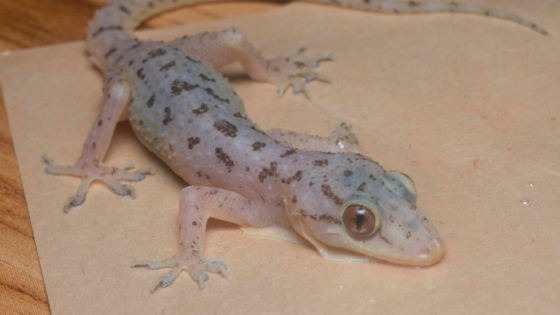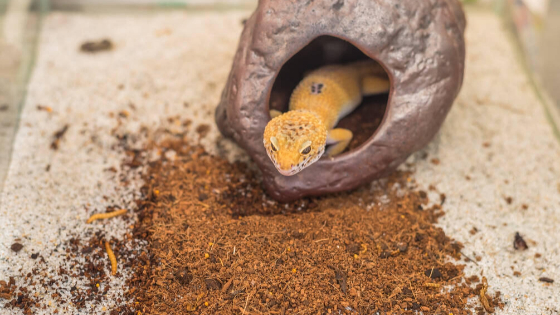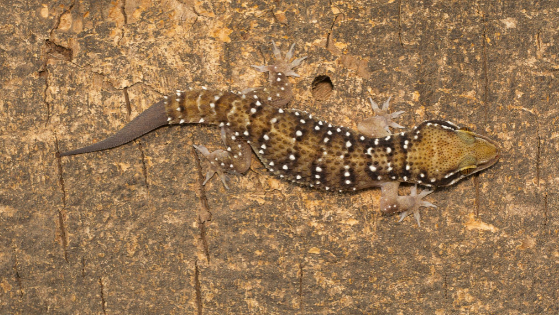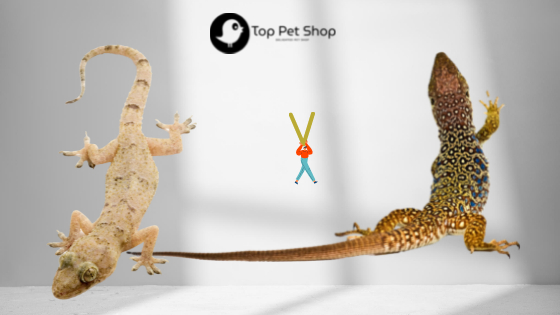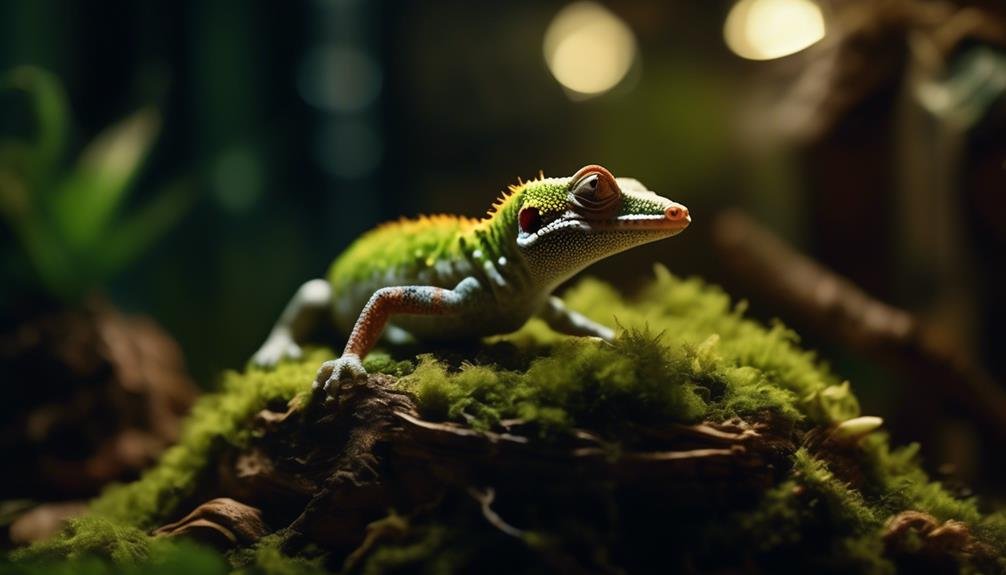
Welcome to the world of Chahoua gecko care, where we will provide you with expert tips to ensure the happiness and well-being of these fascinating creatures.
Like any responsible pet owner, you want to create an environment that promotes their health and contentment, but where do you begin?
In this comprehensive guide, we will explore essential aspects of Chahoua gecko care, from housing requirements to feeding habits and everything in between.
By the end, you will have the knowledge and techniques necessary to create a nurturing environment for your Chahoua geckos.
So, let’s embark on this journey together and uncover the secrets to keeping these unique reptiles happy and healthy.
Key Takeaways
- Chahoua geckos require enclosures with height and hiding places
- Adult geckos should be housed individually unless breeding
- Chahoua geckos do not require UVB lighting and prefer temperatures between 78-82 degrees Fahrenheit
- Misting the enclosure twice a day provides enough moisture for Chahoua geckos
Chahoua Gecko Overview
The Chahoua gecko, also known as the Mossy gecko, is a species of gecko native to New Caledonia and small surrounding islands. Scientifically known as Mniarogekko chahoua, these geckos are known for their unique appearance, characterized by moss-like patterns on their skin. They are medium-sized, growing to around 7-10 inches from head to tail, and have a lifespan of 15-20 years.
In terms of housing, Chahoua geckos require enclosures with some height and hiding places. While adults should be housed individually, young geckos can be kept in smaller enclosures and moved to larger settings as they grow. Lighting and temperatures should be carefully regulated, with day temperatures ranging from 78-82 degrees Fahrenheit. These geckos are nocturnal and do not require UVB lighting. Adequate humidity is also essential, achieved through misting the enclosure twice a day or providing water bowls and feeding ledges.
In terms of feeding, Chahoua geckos primarily consume Repashy or Pangea crested gecko diet, with the option of offering bugs once or twice a week for additional protein. It is important to dust the bugs with a multi-vitamin for calcium and vitamins.
These geckos are generally tolerant of handling but should be introduced to it gradually to ensure their comfort.
Housing
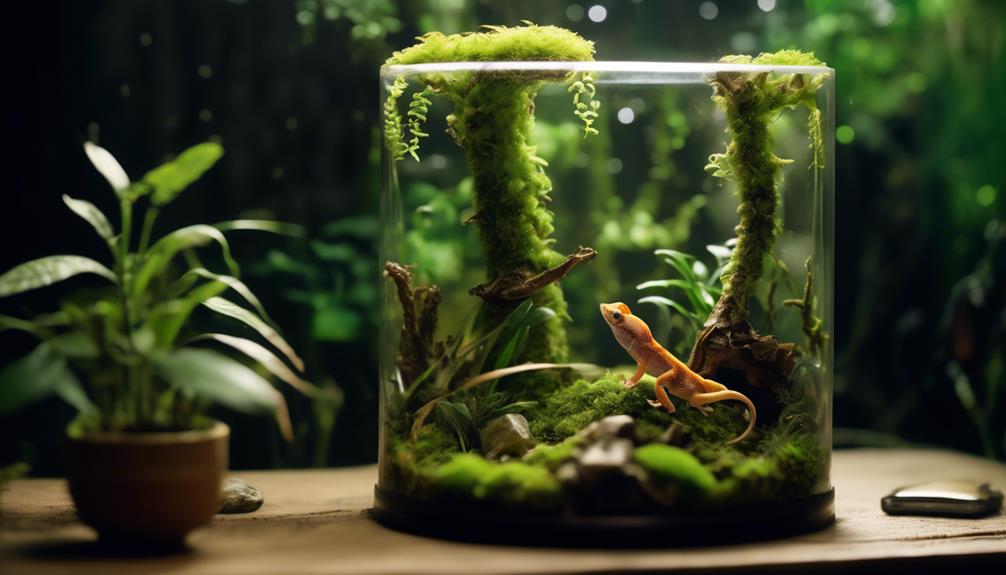
Moving onto the next aspect of caring for Chahoua geckos, we will now focus on the crucial element of housing. Providing the right enclosure is essential for the health and well-being of these geckos. Here are some key points to consider when it comes to housing:
- Enclosure Design:
- The enclosure should have some height and plenty of hiding places to mimic their natural habitat.
- Adults should be housed individually, unless breeding is desired.
- Young geckos should be kept in smaller enclosures to provide a sense of security.
- Juveniles can be moved to larger settings as they grow, allowing for more exploration and exercise.
- Adult geckos can live in larger enclosures, as long as there are enough hiding spots.
Enclosure Size and Setup

When considering the size and setup of the enclosure for Chahoua geckos, it is important to provide an appropriate living space that meets their needs for comfort and security. These geckos require enclosures with some height and plenty of hiding places to mimic their natural habitat.
Adult geckos should be housed individually unless breeding, while young geckos can be kept in smaller enclosures and moved to larger settings as they grow. Adult geckos can live in larger enclosures that allow for more movement and exploration.
It is crucial to maintain proper lighting and temperature levels in the enclosure, with day temperatures ranging from 78-82 degrees Fahrenheit. Additionally, misting the enclosure twice a day provides enough moisture for these geckos, but it is also important to provide a water bowl as an alternative water source.
Lighting and Temperature Requirements

To ensure the optimal care and well-being of Chahoua geckos, it is essential to understand their specific lighting and temperature requirements within their enclosure. Here are the key points to consider:
- Lighting: Chahoua geckos are nocturnal and do not require UVB lighting. However, providing a regular day-night cycle with a light source that mimics natural lighting can help regulate their internal clock.
- Temperature: Daytime temperatures should range between 78-82 degrees Fahrenheit. It is important to monitor the temperature using a gauge to ensure it remains within the appropriate range. Basking bulbs or heat emitters can be used to increase the heat if needed. Additionally, it is crucial to provide a cooler area within the enclosure to allow the geckos to regulate their body temperature.
- Monitoring: Regularly check the temperature and lighting conditions in the enclosure to ensure they are suitable for the geckos’ needs. Adjustments may be necessary based on the gecko’s behavior and overall well-being.
Humidity Needs
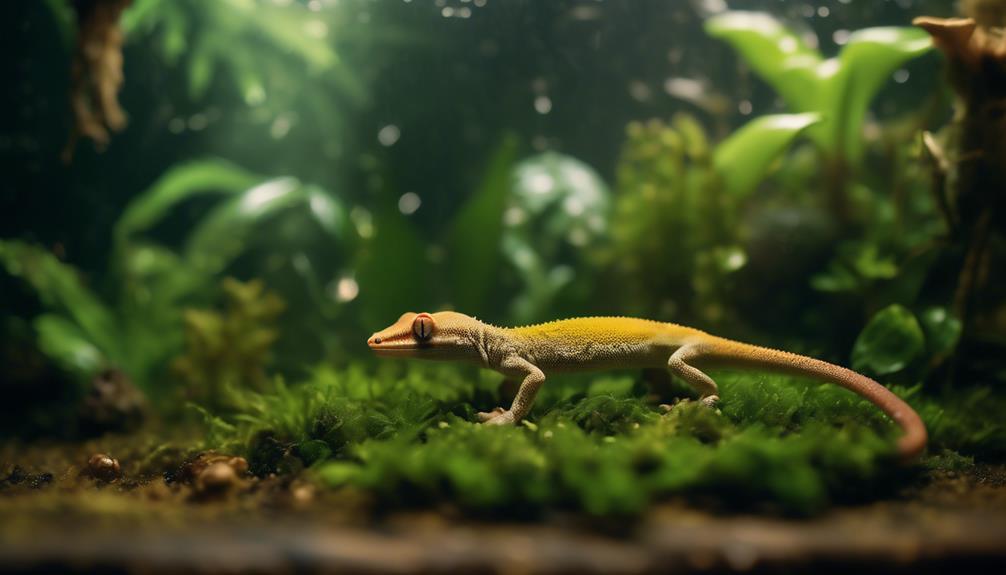
Maintaining appropriate humidity levels is crucial for the well-being of Chahoua geckos. These geckos are native to New Caledonia and surrounding islands, which have a high humidity climate. In order to replicate their natural habitat, it is important to provide a humid environment in their enclosure.
Misting the enclosure twice a day is recommended to provide enough moisture for the geckos. They can also lick water off the glass and foliage, but it is advisable to provide a water bowl as an alternative water source. In dry climates, it may be necessary to increase the misting frequency to ensure that the geckos have enough humidity.
Water bowls or feeding ledges can be used to provide water for the geckos as well. By maintaining proper humidity levels, Chahoua geckos can thrive and stay healthy in captivity.
Feeding Recommendations

In order to ensure optimal nutrition for Chahoua geckos, it is essential to provide them with appropriate feeding recommendations. Here are some key feeding recommendations for keeping your Mossy Geckos happy and healthy:
- Main Food: Use Repashy or Pangea crested gecko diet as the primary food source for Chahoua geckos. These commercially available diets provide a balanced and nutritious meal for your geckos.
- Additional Protein: Offer bugs, such as crickets or mealworms, once or twice a week to provide extra protein. Dust the bugs with a multi-vitamin supplement to ensure your geckos receive essential calcium and vitamins.
- Handling and Feeding: Chahoua geckos can tolerate handling by their owners. Start slow and gradually increase handling time to make them comfortable. Use your hands like a treadmill to calm jumpy juveniles. Geckos may get tired and calm down after a few minutes, so repeat handling exercises to build their comfort level.
Main Diet: Repashy or Pangea Crested Gecko Diet
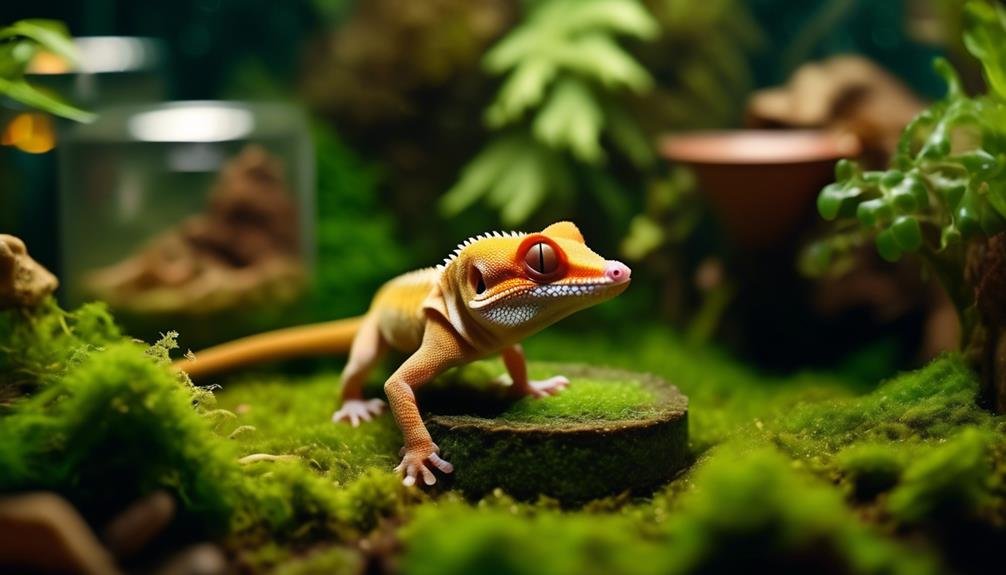
The primary food source recommended for Chahoua geckos is either Repashy or Pangea crested gecko diet. These commercially available powdered diets are specifically formulated to meet the nutritional needs of geckos, including Chahouas.
They provide a balanced combination of proteins, fats, carbohydrates, vitamins, and minerals necessary for their overall health and well-being.
The Repashy and Pangea crested gecko diets are convenient and easy to use, as they can be mixed with water to create a gel-like consistency that geckos can easily consume.
Additionally, these diets can be supplemented with insects, such as crickets or mealworms, once or twice a week to provide additional protein.
Additional Protein: Bugs
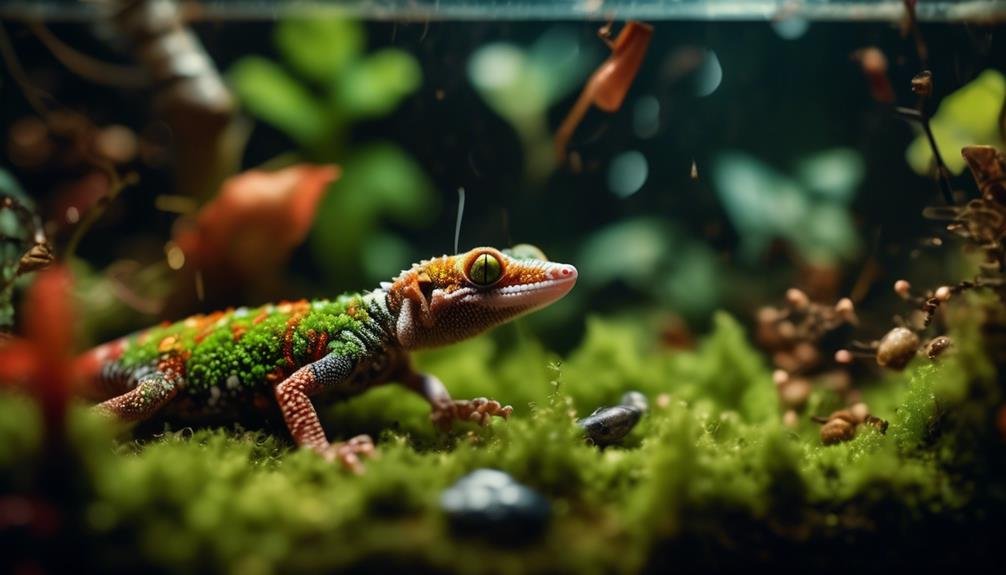
To supplement their diet, Chahoua geckos can be provided with additional protein through the inclusion of bugs. This helps to mimic their natural diet in the wild and ensures they receive all the necessary nutrients for optimal health. Here are three important aspects to consider when offering bugs to Chahoua geckos:
- Variety: It is crucial to offer a variety of bugs to ensure a well-rounded diet. This can include gut-loaded crickets, mealworms, roaches, and waxworms. Each bug has its own nutritional profile, so providing a diverse range will help meet the gecko’s nutritional needs.
- Size: The size of the bugs should be appropriate for the gecko’s size and age. Smaller geckos can be offered smaller bugs, while larger geckos can handle larger prey. It is important to avoid offering bugs that are too large, as this can pose a choking hazard.
- Gut Loading and Supplementation: It is essential to gut-load the bugs with nutritious food before offering them to the gecko. This involves feeding the bugs a high-quality diet to ensure they are packed with essential nutrients. Additionally, dusting the bugs with a calcium and vitamin supplement before feeding provides the gecko with necessary nutrients that may be lacking in their main diet.
Handling Tips and Techniques
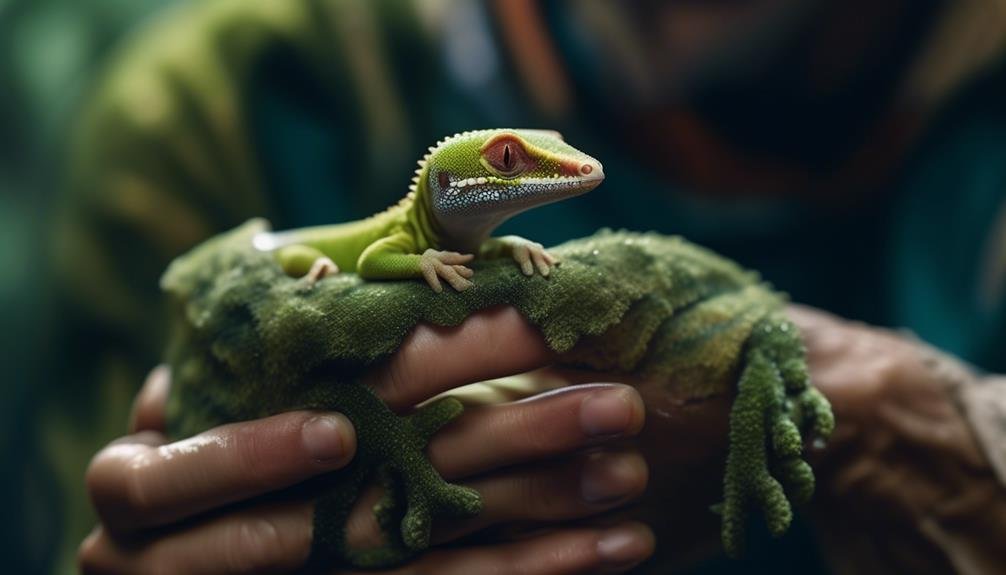
When handling Chahoua geckos, it is important to approach with patience and gradually increase the duration of each session. These geckos can tolerate handling by their owners, but it is essential to create a calm and comfortable environment for them. Start by using your hands like a treadmill to calm jumpy juveniles. Geckos may initially be skittish, but they often get tired and calm down after a few minutes of handling. Repeat handling exercises regularly to help them become more accustomed to human interaction. Here is a table that summarizes the key handling tips and techniques:
| Handling Tips and Techniques |
|---|
| Approach with patience |
| Gradually increase duration |
| Use hands like a treadmill |
| Repeat handling exercises |
Gradual Introduction to Handling
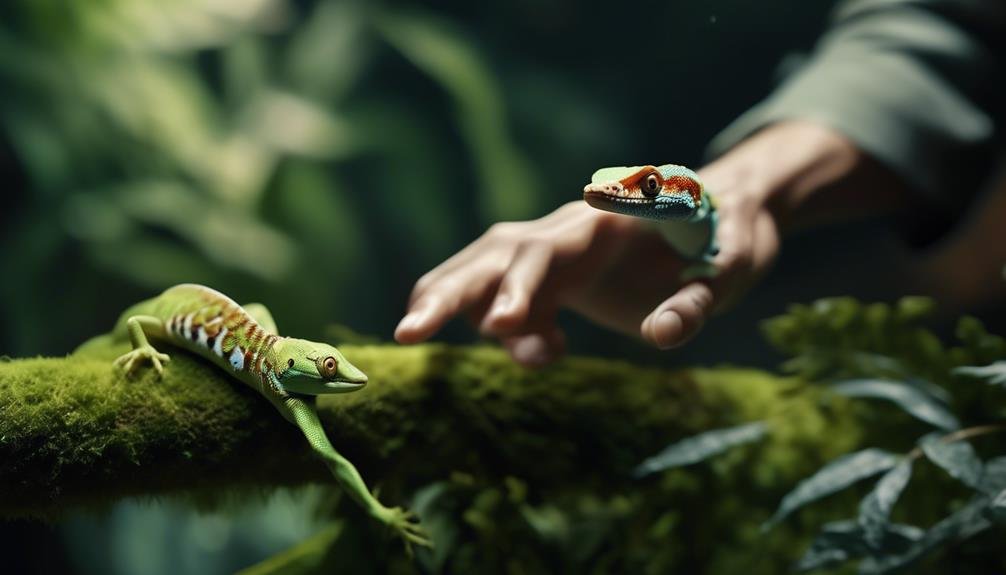
After establishing a calm and comfortable environment for Chahoua geckos through regular handling exercises, the gradual introduction to handling can now be initiated. This process is crucial in building trust and reducing stress for these geckos.
Here are some tips for a successful gradual introduction to handling:
- Start with short sessions: Begin by handling the gecko for just a few minutes at a time, gradually increasing the duration as the gecko becomes more comfortable.
- Use gentle movements: Slow and steady movements will help the gecko feel secure and prevent it from becoming startled or anxious.
- Offer hiding spots: Place small hides or branches in the enclosure to provide the gecko with a sense of security during handling sessions.
Calming Techniques for Jumpy Juveniles
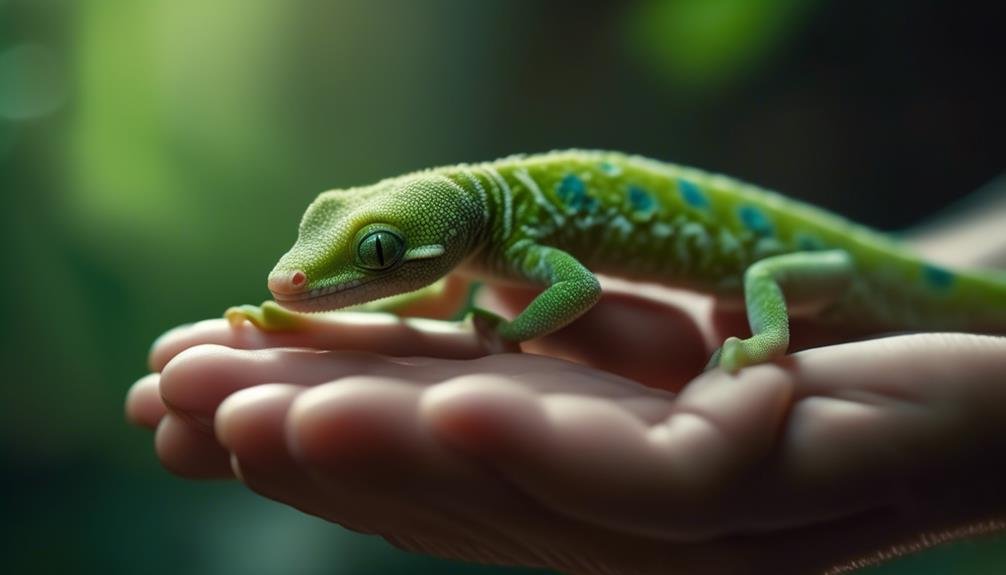
One effective approach for calming jumpy juveniles is to utilize specific handling techniques that promote a sense of security and relaxation. When handling a jumpy juvenile Chahoua gecko, it is important to start slow and gradually increase the amount of time spent handling them.
Using your hands like a treadmill can help to calm the gecko by providing a sense of security and stability. The gecko may initially be resistant and exhibit jumpy behavior, but with repeated handling exercises, they will become more comfortable and calm.
It is important to be patient and gentle during the handling process, as rough or forceful handling can cause stress and anxiety in the gecko. By utilizing these calming techniques, you can help your jumpy juvenile Chahoua gecko feel more at ease and secure in their environment.
Building Trust and Comfort Through Handling Exercises
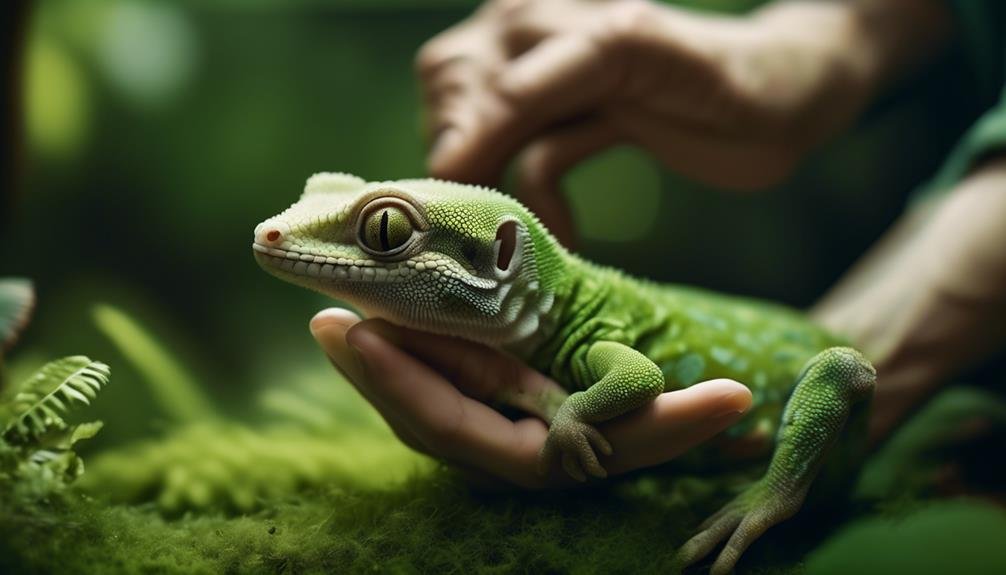
To further establish a sense of trust and comfort with your jumpy juvenile Chahoua gecko, implementing regular handling exercises can be a beneficial approach. Here are three ways in which handling exercises can help build trust and comfort with your gecko:
- Start slow: Begin by gently introducing your gecko to your hand and allowing it to explore at its own pace. This gradual approach will help the gecko feel more comfortable and less stressed during handling sessions.
- Use hands like a treadmill: Mimic a gentle walking motion with your hands to provide a sense of security and stability to your gecko. This motion can help calm down jumpy juveniles and allow them to relax in your hands.
- Repeat handling exercises: Consistency is key when it comes to building trust with your gecko. By regularly engaging in handling exercises, your gecko will become more familiar with the experience and develop a greater sense of trust in you.
Lifespan and Health Considerations
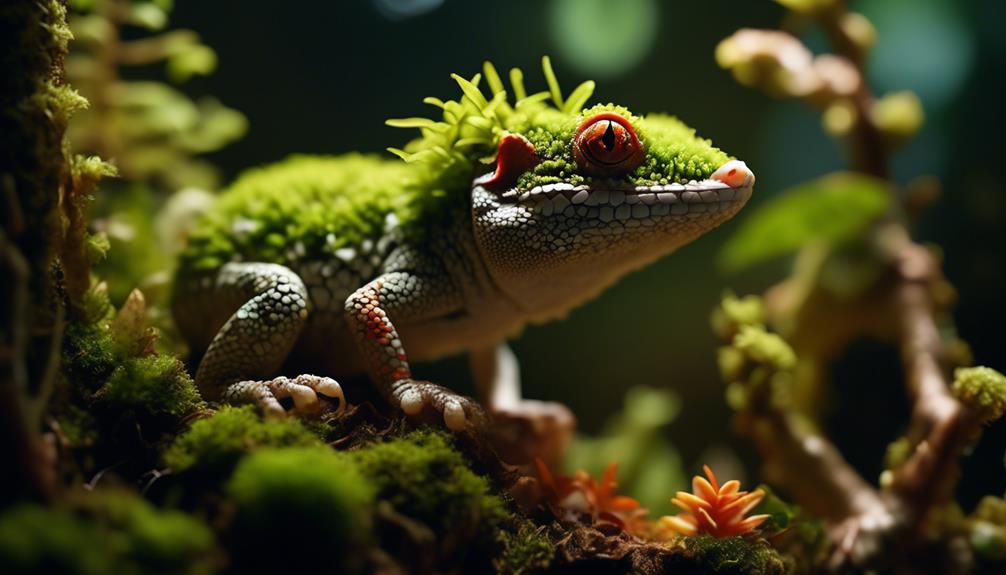
Lifespan and health considerations play a crucial role in the care and well-being of Chahoua geckos. These geckos can live for 15-20 years if provided with proper care and a suitable environment. Maintaining their health requires attention to various factors.
Regular veterinary check-ups are essential to monitor their overall health and to detect any potential issues early on. It is important to ensure that their enclosure is clean and free from any harmful bacteria or parasites.
Providing a balanced diet that includes a combination of commercially available crested gecko diet and occasional insects for added protein is crucial for their nutritional needs. Additionally, maintaining appropriate temperature and humidity levels within their enclosure is vital to prevent respiratory and other health problems.
Common Health Issues and How to Prevent Them
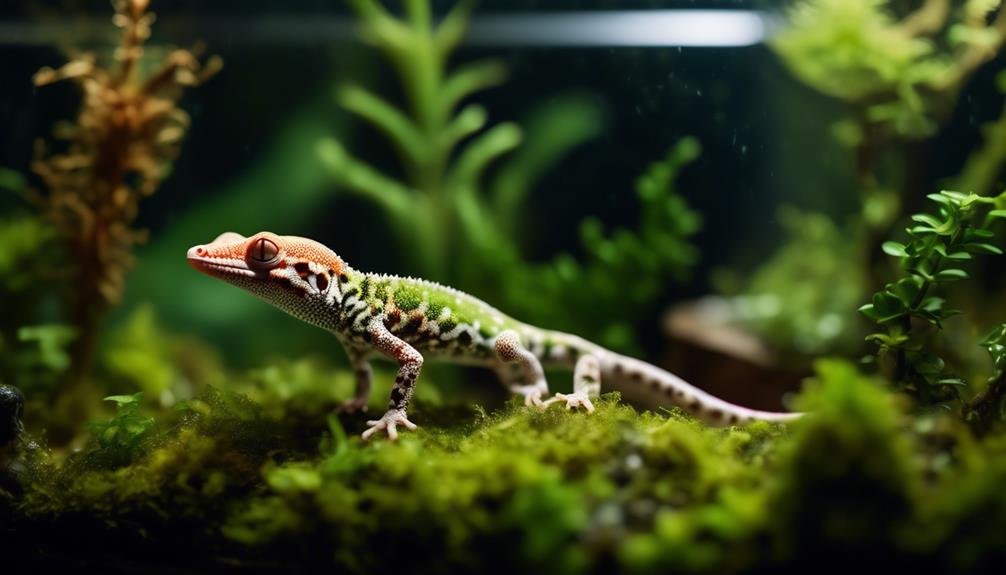
When caring for Chahoua geckos, it is crucial to be aware of common health issues and take preventive measures to ensure their well-being.
Here are some common health issues and how to prevent them:
- Respiratory Infections:
- Maintain proper humidity levels in the enclosure.
- Avoid drafts and ensure proper ventilation.
- Clean the enclosure regularly to prevent bacterial growth.
- Metabolic Bone Disease:
- Provide a calcium supplement to prevent calcium deficiency.
- Ensure a balanced diet with appropriate levels of calcium and vitamin D3.
- Provide proper UVB lighting to aid in calcium absorption.
- Parasites:
- Quarantine new geckos before introducing them to the main enclosure.
- Regularly inspect and treat for parasites.
- Maintain a clean and hygienic enclosure.
Regular Vet Check-ups and Care
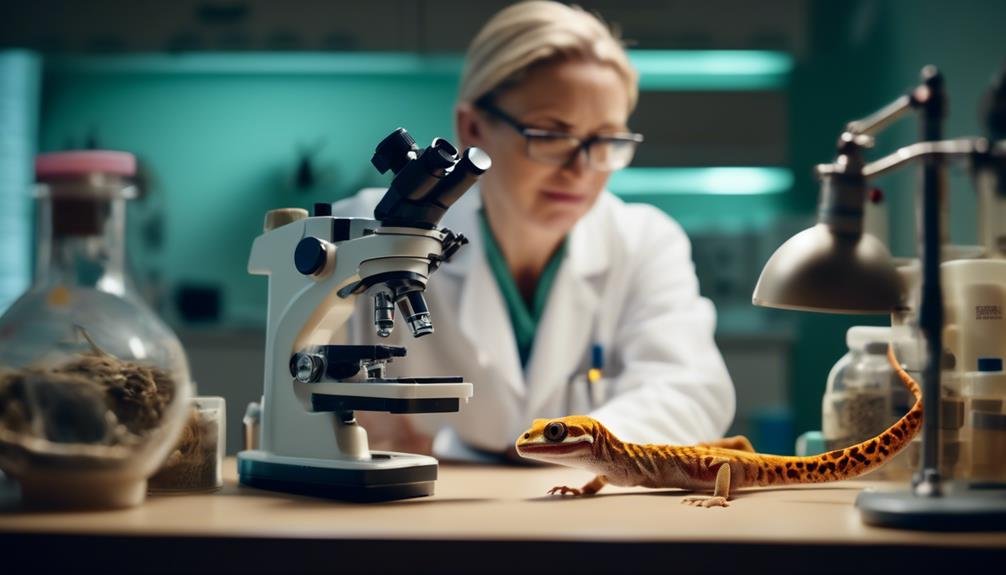
Regular vet check-ups and care are essential for maintaining the health and well-being of Chahoua geckos. Geckos, like any other pets, can develop health issues that may not be immediately apparent.
Regular check-ups allow the vet to monitor the gecko’s overall health, detect any potential problems early on, and provide appropriate treatment. During these check-ups, the vet will conduct a thorough examination, including assessing the gecko’s weight, body condition, and skin health. They may also perform various diagnostic tests, such as fecal examinations, to check for parasites or blood work to assess organ function.
Additionally, the vet can provide guidance on proper nutrition, habitat maintenance, and any necessary vaccinations. By investing in regular veterinary care, Chahoua gecko owners can ensure their pets live long and healthy lives.
Frequently Asked Questions
Can Chahoua Geckos Be Housed Together?
Chahoua geckos, also known as Mossy Geckos, can be housed together if they are not breeding. However, it is generally recommended to house adult geckos individually to avoid territorial disputes and ensure their happiness and health.
What Is the Ideal Temperature Range for Chahoua Geckos?
The ideal temperature range for Chahoua geckos is between 78-82 degrees Fahrenheit during the day. It is important to monitor the temperature using a gauge and provide a cooler area in the enclosure.
How Often Should Chahoua Geckos Be Misted?
Chahoua geckos should be misted twice a day to provide enough moisture in their enclosure. This can be increased in dry climates. Water can also be provided through water bowls or feeding ledges.
Can Chahoua Geckos Be Fed Only Repashy or Pangea Crested Gecko Diet?
Chahoua geckos can be fed only Repashy or Pangea crested gecko diet as their main food, but offering bugs once or twice a week provides additional protein. Dusting bugs with a multi-vitamin is recommended for calcium and vitamins.
How Often Should Chahoua Geckos Have Vet Check-Ups?
Chahoua geckos should have regular vet check-ups to ensure their overall health and well-being. The frequency of these check-ups may vary depending on the gecko’s age and any specific health concerns. It is best to consult with a reptile veterinarian for guidance.
Are the care tips for Chahoua Geckos applicable to Giant Day Geckos as well?
Yes, the care tips for Chahoua Geckos are generally applicable to Giant Day Geckos as well. Both species require a similar set-up in terms of habitat, temperature, humidity, and diet. However, there may be specific keeping giant day geckos secrets that can help ensure the overall health and well-being of your Giant Day Geckos.
Conclusion
In conclusion, the comprehensive Mossy Gecko Care Guide provides expert tips on how to ensure the happiness and well-being of Chahoua Geckos.
By following the guidelines on housing, lighting, temperature, humidity, and feeding, reptile owners can create a comfortable and nurturing environment for their geckos.
With proper care and attention, these geckos can thrive in captivity and live a long and healthy life.

